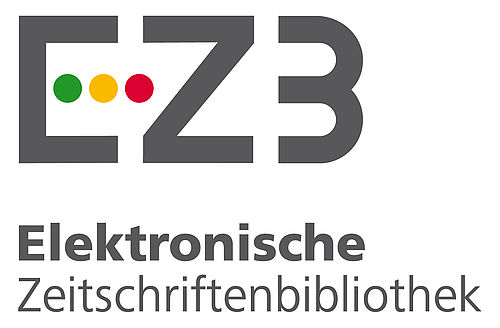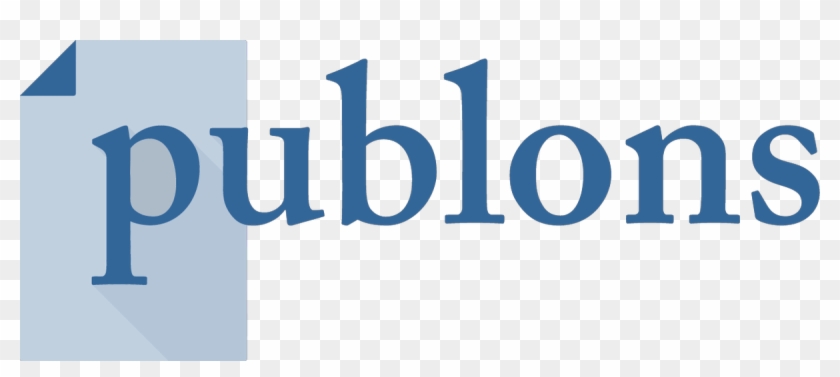Abstract
References
- 1. Al-Snafi, A.E., 2015. The chemical constituents and pharmacological effects of Capsella bursa-pastoris-A review. International Journal of Pharmacology and toxicology, 5(2), 76-81. 2. Aoki, Y., Brown, H.W., Brubaker, L., Cornu, J.N., Daly, J.O., Cartwright, R., 2018. Urinary incontinence in women, Nature Reviews Disease Primers, 3, 17042. doi:10.1038/nrdp.2017.42. 3. Brown, J.S., Grady, D., Ouslander, J.G., Herzog, A.R., Varner, R.E., Posner, S.F., 1999. Prevalence of Urinary Incontinence and Associated Risk Factors in Postmenopausal Women. Obstetrics & Gynecology, 94(1), 66–70. 4. Buchsbaum, G.M., Chin, M., Glantz, C., Guzick, D., 2002. Prevalence of Urinary Incontinence and Associated Risk Factors in a Cohort of Nuns. Obstetrics & Gynecology, 100(2), 226–229. 5. Danforth, K.N., Townsend, M.K., Lifford, K., Curhan, G.C., Resnick, N.M., Grodstein, F., 2006. Risk factors for urinary incontinence among middle-aged women. American Journal of Obstetrics and Gynecology, 194, 339–345. 6. Grosso, C., Vinholes, J., Silva, L.R., Guedes de PinhoI, P., Gonçalves, R.F., Valentão P., JägerII A.K., Andrade P.B., 2011. Chemical composition and biological screening of Capsella bursa-pastoris. Brazilian Journal of Pharmacognosy, 21(4), 635-644. 7. Khandelwal, C., Kistler, C., 2013. Diagnosis of Urinary Incontinence. American Family Physician, 87(8),543-550. 8. Luber, K. M., 2004. The Definition, Prevalence, and Risk Factors for Stress Urinary Incontinence. Reviews in urology, 6(3), 3-9. 9. McPhil, J. H., 2004. The prevalence of stress urinary incontinence in women. Nursing time, 100(20), p.70. 10. Minassian, V.A., Stewart, W.F., Wood, G.C., 2008. Urinary Incontinence in Women: Variation in Prevalence Estimates and Risk Factors. Obstetrics & Gynecology, 111(2), 324-331. 11. Minassian, V.A., Drutz, H.P., Al-Badr, A., 2003. Urinary incontinence as worldwide problem. International Journal of Gynecology and Obstetrics, 82, 327–338. 12. Nygaard, IE., Heit, M., 2004. Stress Urinary Incontinence. Obstetrics & Gynecology, 104(3), 607-620. 13. Oreščanin, V., Findri Guštek, Š., 2016. Development and Testing of New Herbal Ointment for the Treatment of Stress Urinary Incontinence-A Preliminary Study. Global Journal For Research Analysis, 5(7), 371-374. 14. Oreščanin, V., Findri Guštek, Š. Fistonić, I., Rodić, J., 2018. Efficacy of bioapigyn ointment for pelvic muscle tonus in the treatment of stress urinary incontinence and vulvo-vagnal disorders. IJRDO - Journal of Health Sciences And Nursing, 3(10), 13-25. 15. Peyrat, L., Haillot, O., Bruyere, F., Boutin, J.M., Bertrand, P., Lanson, Y., 2002. Prevalence and risk factors of urinary incontinence in young and middle-aged women. BJU International, 89(1), 61–66. 16. Radzimińska, A., Strączyńska, A., Weber-Rajek, M., Styczyńska, H., Strojek, K., Piekorz. Z., 2018. The impact of pelvic floor muscle training on the quality of life of women with urinary incontinence: a systematic literature review. Clinical Interventions in Aging, 13, 957–965. 17. Rovner, S.E., Wein, J.A., 2004. Treatment Options for Stress Urinary Incontinence. Reviews in urology, 6 (Suppl 3), S29–S47. 18. Zhu, L., Lang, J., Liu, C., Han, S., Huang, J., Li, X., 2009. The epidemiological study of women with urinary incontinence and risk factors for stress urinary incontinence in China. Menopause, 16(4), 831-836.
Bioapigyn® Ointment of Pelvic Muscle Tonus Versus Pelvic Floor Muscle Training for the Treatment of Urinary Incontinence
Abstract
Objective/Purpose: The purpose of this work was the assessment of the clinical efficacy
and safety of Bioapigyn® vaginal ointment for pelvic muscle tonus compared to
pelvic floor muscle training in alleviating the symptoms of stress, urge and
mixed urinary incontinence and vulvo-vaginal disorders in child-bearing and
menopausal & postmenopausal women. Materials
and Methods: The experimental group consisted of 66 women was treated 28
days with Bioapigyn® ointment for pelvic muscle tonus (2.5 mL/day). The control
group also consisted of 66 participants
was subjected to pelvic floor muscle training during 28 days (five times a
day). ICIQ-UI SF score, the residual urine volume, perineometry, the total
score of vulvo-vaginal symptoms and vaginal pH were determined before and after
the treatment or training. Results:
Following the treatment with Bioapigyn® ointment ICIQ-UI-SF score decreased
54.9%, perineometry parameters increased between
31.5 and 34.3%,
residual urine decreased
for 76.9% and vaginal
pH for 14.2%. All the symptoms of
vulvo-vaginal disorders disappeared completely in all participants. The control
group showed no changes in vaginal pH or the improvement concerning the
vulvo-vaginal complaints. ICIQ- UI-SF score decreased for 4.3%, residual urine
volume for 9.1% while perineometry parameters increased between 4.3 and 8.3%. Conclusion/Discussion: Bioapigyn®
vaginal ointment for pelvic muscle tonus alleviate the symptoms of incontinence
by tightening and firming of the smooth muscles of the pelvic floor thanks to
the ingredients with smooth muscles contraction/relaxation and astringent
properties. Low pH, high osmolarity, viscosity, greasiness and coating effect
of the ointment eradicated vulvo-vaginal complaints.
References
- 1. Al-Snafi, A.E., 2015. The chemical constituents and pharmacological effects of Capsella bursa-pastoris-A review. International Journal of Pharmacology and toxicology, 5(2), 76-81. 2. Aoki, Y., Brown, H.W., Brubaker, L., Cornu, J.N., Daly, J.O., Cartwright, R., 2018. Urinary incontinence in women, Nature Reviews Disease Primers, 3, 17042. doi:10.1038/nrdp.2017.42. 3. Brown, J.S., Grady, D., Ouslander, J.G., Herzog, A.R., Varner, R.E., Posner, S.F., 1999. Prevalence of Urinary Incontinence and Associated Risk Factors in Postmenopausal Women. Obstetrics & Gynecology, 94(1), 66–70. 4. Buchsbaum, G.M., Chin, M., Glantz, C., Guzick, D., 2002. Prevalence of Urinary Incontinence and Associated Risk Factors in a Cohort of Nuns. Obstetrics & Gynecology, 100(2), 226–229. 5. Danforth, K.N., Townsend, M.K., Lifford, K., Curhan, G.C., Resnick, N.M., Grodstein, F., 2006. Risk factors for urinary incontinence among middle-aged women. American Journal of Obstetrics and Gynecology, 194, 339–345. 6. Grosso, C., Vinholes, J., Silva, L.R., Guedes de PinhoI, P., Gonçalves, R.F., Valentão P., JägerII A.K., Andrade P.B., 2011. Chemical composition and biological screening of Capsella bursa-pastoris. Brazilian Journal of Pharmacognosy, 21(4), 635-644. 7. Khandelwal, C., Kistler, C., 2013. Diagnosis of Urinary Incontinence. American Family Physician, 87(8),543-550. 8. Luber, K. M., 2004. The Definition, Prevalence, and Risk Factors for Stress Urinary Incontinence. Reviews in urology, 6(3), 3-9. 9. McPhil, J. H., 2004. The prevalence of stress urinary incontinence in women. Nursing time, 100(20), p.70. 10. Minassian, V.A., Stewart, W.F., Wood, G.C., 2008. Urinary Incontinence in Women: Variation in Prevalence Estimates and Risk Factors. Obstetrics & Gynecology, 111(2), 324-331. 11. Minassian, V.A., Drutz, H.P., Al-Badr, A., 2003. Urinary incontinence as worldwide problem. International Journal of Gynecology and Obstetrics, 82, 327–338. 12. Nygaard, IE., Heit, M., 2004. Stress Urinary Incontinence. Obstetrics & Gynecology, 104(3), 607-620. 13. Oreščanin, V., Findri Guštek, Š., 2016. Development and Testing of New Herbal Ointment for the Treatment of Stress Urinary Incontinence-A Preliminary Study. Global Journal For Research Analysis, 5(7), 371-374. 14. Oreščanin, V., Findri Guštek, Š. Fistonić, I., Rodić, J., 2018. Efficacy of bioapigyn ointment for pelvic muscle tonus in the treatment of stress urinary incontinence and vulvo-vagnal disorders. IJRDO - Journal of Health Sciences And Nursing, 3(10), 13-25. 15. Peyrat, L., Haillot, O., Bruyere, F., Boutin, J.M., Bertrand, P., Lanson, Y., 2002. Prevalence and risk factors of urinary incontinence in young and middle-aged women. BJU International, 89(1), 61–66. 16. Radzimińska, A., Strączyńska, A., Weber-Rajek, M., Styczyńska, H., Strojek, K., Piekorz. Z., 2018. The impact of pelvic floor muscle training on the quality of life of women with urinary incontinence: a systematic literature review. Clinical Interventions in Aging, 13, 957–965. 17. Rovner, S.E., Wein, J.A., 2004. Treatment Options for Stress Urinary Incontinence. Reviews in urology, 6 (Suppl 3), S29–S47. 18. Zhu, L., Lang, J., Liu, C., Han, S., Huang, J., Li, X., 2009. The epidemiological study of women with urinary incontinence and risk factors for stress urinary incontinence in China. Menopause, 16(4), 831-836.
Details
| Primary Language | English |
|---|---|
| Journal Section | Research Articles |
| Authors | |
| Publication Date | December 26, 2019 |
| Published in Issue | Year 2019 Volume: 2 Issue: 2 |
Cite
-------------------------------------------------------------------------------------------------------------------------------













-------------------------------------------------------------------------------------------------------------------------
 CUPMAP Journal is licensed under a Creative Commons Attribution-NonCommercial-NoDerivatives 4.0 International License.
CUPMAP Journal is licensed under a Creative Commons Attribution-NonCommercial-NoDerivatives 4.0 International License.
-----------------------------------------------------------------------------------------------------------------------------------------
This is an open access journal which means that all content is freely available without charge to the user or his/her institution. Users are allowed to read, download, copy, distribute, print, search, or link to the full texts of the articles, or use them for any other lawful purpose, without asking prior permission from the publisher or the author. This is in accordance with the BOAI definition of open access.

